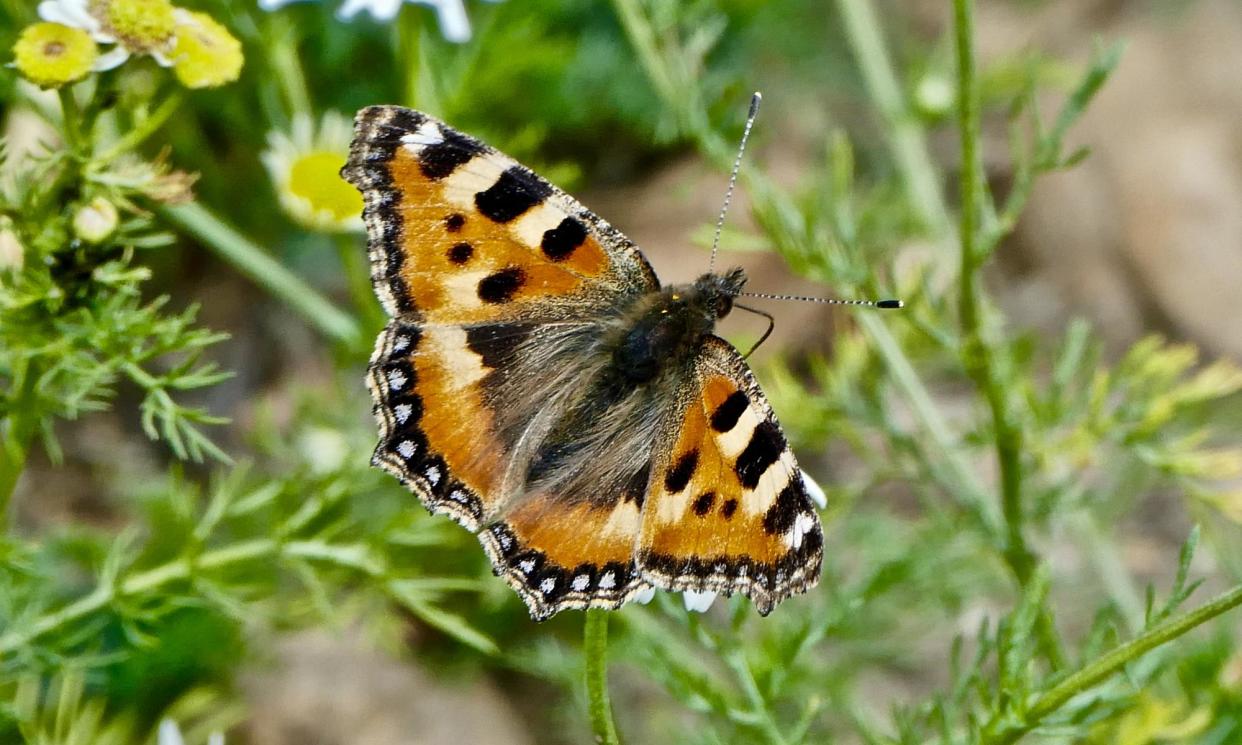Butterfly study finds sharpest fall on record for small tortoiseshell in England

The small tortoiseshell butterfly has suffered its worst year on record in England, and has declined by 82% across the UK since 1976, according to the annual scientific count of butterfly populations.
The sharp decline in numbers of the once-common garden butterfly has puzzled scientists, but it is thought to be linked to climate breakdown. It had its worst year on record in England, its second worst in Wales and its joint-fifth worst in Scotland in 2023 but did well in Northern Ireland, logging its second-best year.
Results from the annual UK Butterfly Monitoring Scheme (UKBMS), the largest and longest-running scientific butterfly dataset in the world, show a mixed picture for the UK’s populations. The scheme is run by Butterfly Conservation, the UK Centre for Ecology and Hydrology (UKCEH), the British Trust for Ornithology and the Joint Nature Conservation Committee.
Half the 58 species monitored had a better than average year, while the other half were below average at monitored sites. Some showed encouraging signs that conservation efforts are working: the large blue, which was reintroduced to the UK in the 1980s after it became extinct in 1979, recorded its best year yet. The chequered skipper, which was returned to England in 2018 after becoming extinct in the 1970s, also recorded its best ever year.
Some species are still suffering the effects of the 2022 drought, such as the green-veined white and the ringlet, which both had a poor year. This is because the food plants that the caterpillars of the next generation feed upon died during the drought, leaving fewer caterpillars to survive and transform into the next generation of butterflies.
Related: Rare swallowtail butterfly suffers worst summer since records began
Climate breakdown appears to be damaging the small tortoiseshell’s prospects in southern Britain, while it has generally fared better in north-western areas in recent summers. Global heating is helping some species, such as the red admiral, which enjoyed its best ever year last year. It is a migratory species that has begun to overwinter in the UK as the climate has warmed, and its numbers have increased by 318% at monitored sites since 1976.
Dr Marc Botham, a butterfly ecologist at the UKCEH, said: “Butterflies are an indicator species, meaning they can tell us about the health of the wider environment, which makes the UKBMS data invaluable in assessing the health of our countryside and natural world in general. The mixed results this year emphasise the need for continued monitoring and conservation efforts to protect these important species and their habitats.
The UKBMS now records data on more than 3,000 sites a year, which is used for understanding changes in insect populations and provides indications about climate breakdown and the effect on species.
Dr Richard Fox, the head of science at the charity Butterfly Conservation, said: “Butterfly numbers fluctuate naturally from year to year, largely due to the weather, but the long-term trends of UK butterflies are mainly driven by human activity, including habitat damage and destruction, pesticide use, pollution and climate change. By monitoring long-term butterfly trends we can learn about the impact of climate change and other factors on our native wildlife.”


